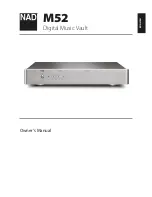
3-6
RT-300 MAINTENANCE CHECKLIST
Refer to the component maintenance section of this manual and to the engine operator's
manual for complete instructions.
50 HOUR INTERVAL:
1. 50 hour lubrication as shown on lube schedule.
2. Check fluid levels in engine, transmission, hydraulic tank and parking brakes.
3. Check tension and condition of engine belts.
4. Inspect air intake and exhaust system for cracks, leaks, and loose bolts.
5. Visually inspect welds on boom, turret and outriggers.
6. Check outrigger warning light as described on page 2-14.
7. Clean steering proximity sensor tips.
8. Inspect wire rope thoroughly.
9. Inspect for physical damage and leaks.
10. Check tire pressure and condition (100 psi (690 kPa) on 17.5 x 25, 20 ply).
11. Clean radiator fins and check coolant level.
12. Tier 3 engine: Clean air cleaner inlet, dust cap and dust cup.
13. Change engine oil and filter after first 50 hours. Replace at intervals specified by
engine manufacturer thereafter.
14. Change the hydraulic filter after first 100 hours and at 500 hours thereafter.
15. Check rotation gear and pinion fit and gear train backlash.
16. Check rotation bearing and gearbox bolt tightness.
17. Check axle mounting bolts.
18. Torque wheel mounting nuts to 475 foot-pounds (645 N-m).
19. Check for loose pins or pin retainers.
20. Check brake lines and steering lines for damage.
21. Measure extension and retraction chain sag and adjust, if necessary.
22. Inspect sheaves and hooks for damage or excessive wear.
23. Change transmission fluid and filter after the first 20 hours. Change filter whenever
the indicator light stays on with the fluid above 100
F (38°C) or every 200 hours or 6
months, whichever is sooner. When the filter is changed because the indicator
shows it is plugged, change the fluid at every other filter change. When the filter is
changed at 200 hour intervals and the indicator light has not been on, change fluid
every 600 hours.
24. Perform a load test according to the Rated Capacity Limiter manual.
25. Check horn, outrigger alarm, and backup alarm.
250 HOUR INTERVAL:
1. 50 hour maintenance.
2. 50 and 250 hour lubrication.
3. Check engine mounts and radiator mounts.
4. Adjust and lubricate boom chains and chain sheaves.
5. Inspect all bolts for tightness.
6. Clean engine and battery.
7. Visually inspect all welds for cracks.
8. Check hydraulic fittings and centerpost for leaks.
9. Check parking brake pad-to-disc clearance.
10. Perform all maintenance required by engine manual.
Summary of Contents for RT-300-2G
Page 6: ...1 2 DIMENSIONAL DATA Courtesy of Crane Market...
Page 7: ...1 3 RT 300 2G TURNING DIMENSIONS Courtesy of Crane Market...
Page 16: ...Courtesy of Crane Market...
Page 24: ...2 8 Courtesy of Crane Market...
Page 33: ...2 17 CAPACITY CHART FOR RT 300 2G Courtesy of Crane Market...
Page 34: ...2 18 CAPACITY CHART FOR RT 300 2G METRIC Courtesy of Crane Market...
Page 55: ...3 9 Courtesy of Crane Market...
Page 66: ...Courtesy of Crane Market...
Page 67: ...Courtesy of Crane Market...
Page 88: ...Courtesy of Crane Market...
Page 89: ...Powered by TCPDF www tcpdf org Courtesy of Crane Market...
















































